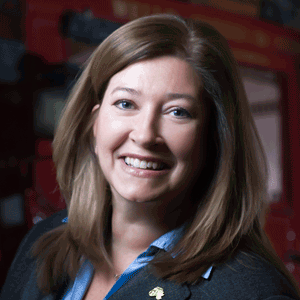As a small business owner, it might seem like you spend a lot of your time on day-to-day planning, such as setting next month’s sales appointments, placing orders for this quarter or projecting expenses for the year ahead. But how much time have you dedicated to developing your retirement plan?
When it comes to retirement, the earlier you start planning, the better off you’ll be. In a 2014 Wells Fargo/Gallup Small Business Index Survey, 55 percent of business owners said they are worried that they will not have enough money in retirement.
Today more than ever, there are many retirement planning resources and tools available to small business owners. The size of your company will play a role in determining your personal and business retirement strategy, including whether or not you finance retirement plans for employees. But the good news is there’s likely a plan that can meet your needs.
Here are six tips to help you start thinking about retirement planning:
1. Define what retirement means to you – For business owners who aren’t ready to face full-time retirement, a scaled back version of their current role might be the ideal way to slowly step back from the business. There are many advantages to this approach, including building additional income and delaying Social Security benefits, but it’s important to establish clear parameters that will support this plan. Take time to outline what retirement means for you, and build that into your plan.
2. Set retirement goals and objectives – Explore business and personal goals, and set a target retirement date that makes sense for you and your business. This can include learning more about your personal financial situation, identifying business transition options and, if you have employees, understanding who will be impacted by your retirement.
3. Get familiar with available contribution plans – Fortunately for small business owners, there are a variety of retirement plans available to help with future planning. From profit-sharing plans that offer you and your employees a portion of your annual profits, to IRAs and 401(k) plans, there are many choices. Make time to meet with your business banker, financial advisor and your tax advisor to find a plan that works for your business.
4. Create a retirement income plan – The money you save now needs to be enough for 20 to 30 years of retirement. Take advantage of the “catch-up” rules that allow people in their 50s to contribute an additional amount to an IRA or 401(k). Work with a financial advisor and a tax or legal advisor to determine how much money you should put away now. Ask when you should plan to start withdrawing your retirement savings. Include this in your overall retirement plan.
5. Consider commercial real estate – If you purchase a commercial real estate property, it can reduce the cost to house your business by replacing the lease or rental payment with a commercial mortgage. Meet with a business banker to discuss your financing options. Then talk to your commercial real estate broker or real estate agent about finding a property that would be an appropriate new home for your company. When you retire, you could lease the property to your former company to create a steady stream of income for you.
6. Review strategies for financing a transition – In the Small Business Index Survey, 59 percent of business owners said they plan to either sell their business or transition it to a family member. Most of these transitions will involve some form of financing. Do you have a succession plan in place? Does your business carry any debts? Will you have funding from an equity sponsor, such as a commercial bank? These are important questions to consider as you develop your retirement plan. Ask your banker about your financing needs and product choices.
Planning for retirement can be complex, but it doesn’t have to be difficult or stressful. After you’ve developed a strong retirement plan, take time to update it annually to ensure you’re staying on track.
Tawnie Nelson of Vancouver is Wells Fargo’s director of Small Business Banking in Clark County and Oregon. She can be reached at 360.759.4820.




